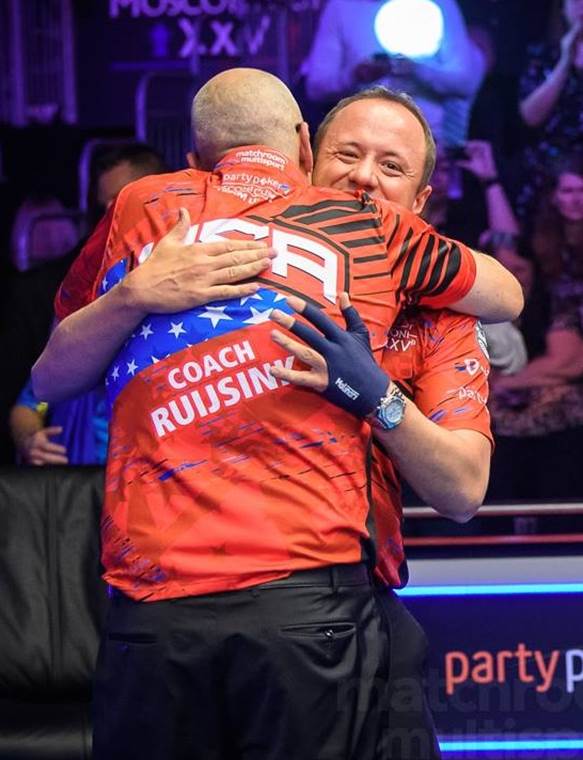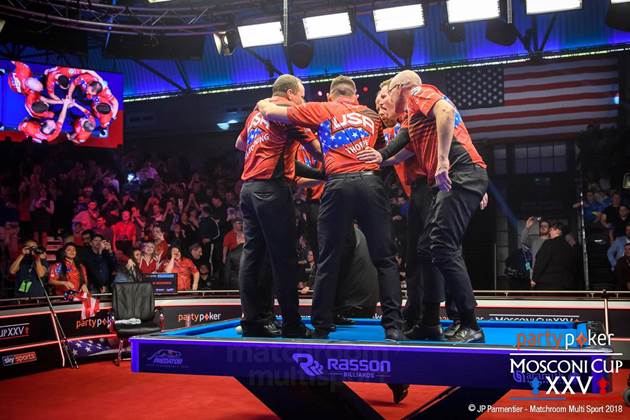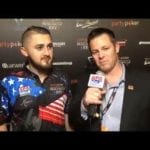By: Jason Bowman
It had been nearly a decade, nine years to be exact, since Team USA last captured the Mosconi Cup.
Since 2009, the Cup had remained guarded by the dominance of Team Europe. Of course that all changed this year when Team USA marched into Alexandra Palace in London, on Team Europe’s home-turf so to speak, and rudely ended the annual European celebration with an 11-9 victory.
But to truly appreciate the epic upset that was the 25th Annual Mosconi Cup, you must first understand how USA pool had to hit rock bottom before it came soaring back to the top.
Over Team USA’s 9-year Cup drought, there were some flat out embarrassing performances; like 2013, when Team USA was demolished 11-2 in Las Vegas.
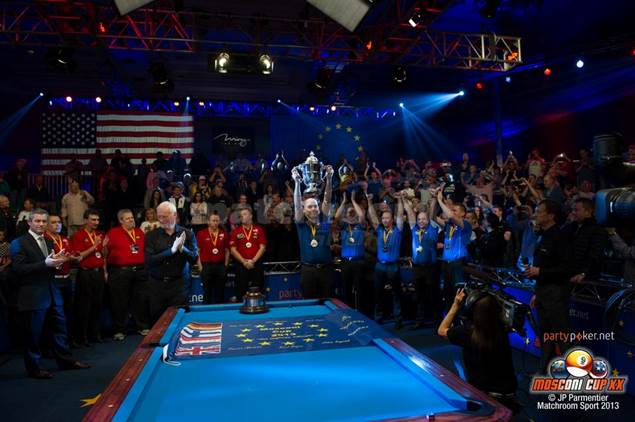
Years where it looked like Team USA might have a more talented and competitive team, the outcome was still largely the same – European dominance, year after year.
More disturbing than the drought itself was the prospect of how long it might last. The talent gap appeared to be growing rapidly between Team USA and Team Europe. Team Europe looked younger, mentally stronger, and flat out better each year.
Many US fans took to social media to question whether Matchroom Sport, the UK-based promotions company that produces the high-profile event amongst several others, would continue to extend an invitation to Team USA. Perhaps “Team Asia” might be a more competitive fit for Team Europe.
To their credit, Matchroom didn’t need to read every “keyboard cowboy’s” Facebook opinion to know they had to find a way to make Team USA more competitive.
In 2014, they brought in Mark Wilson, a top instructor and coach of Lindenwood University’s billiard program.
Wilson very quickly began transitioning to a younger roster. Unfortunately, the outcome was largely the same throughout his 3-year tenure. Wilson was replaced as the Team Captain following Team USA’s loss in 2016.
Matchroom then named a highly controversial replacement, former Team Europe coach Johan Ruysink.
For more stories like this:
By submitting this form, you are consenting to receive marketing emails from: . You can revoke your consent to receive emails at any time by using the SafeUnsubscribe® link, found at the bottom of every email. Emails are serviced by Constant Contact
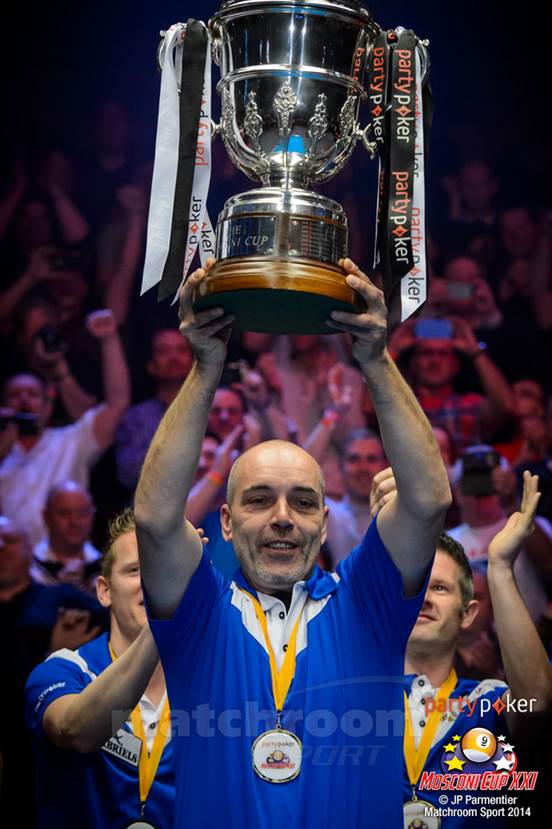
Ruysink was not controversial based on merit, but simply because he wasn’t American. He was, in fact, the man that previously led Team Europe to victory at the American’s expense four times prior at the Mosconi Cup.
Ruysink maintained the youth movement that began under Wilson, but reinforced it with some veteran presence in his first year. The results were disappointing. Team USA lost 11-4 in Las Vegas yet again. Ruysink was so devastated by the loss that he had to take some time to consider whether or not he wanted to return.
But return he did.
Ruysink poured his heart and soul into preparing Team USA, often sacrificing his own time, much of which would normally be spent earning a living as a highly-sought billiards instructor. Ruysink implemented a series of “boot camps” for Team USA candidates.
The process drew some criticism, most notably from Team USA’s top player Shane Van Boening. Van Boening already spends much of the year traveling the globe competing, and he was hesitant to sacrifice more of his time to the Mosconi Cup, which had become a smudge on his exceptional resume year after year.
Fortunately, Ruysink and Van Boening had a sit down on a steamy July day in New Orleans during the billiard industry’s annual trade show. There they came to an understanding, and Van Boening was back in the Mosconi fold.
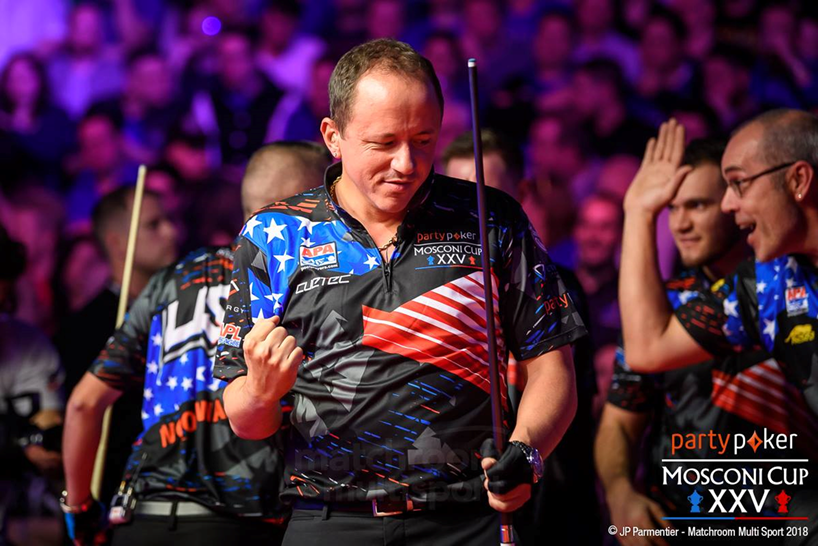
Potential Team USA members continued with Ruysink’s camps until last October when the final five members were selected to compete in London.
Team members included: Skyler Woodward, Billy Thorpe, Corey Deuel, Tyler Styer and, of course, Shane Van Boening. Johan also brought on former Mosconi Cup MVP Jeremy Jones as an Assistant Captain.

Ruysink again went with a major youth movement, selecting three players – Woodward, Thorpe and Styer, who were all 25 years or younger.
Van Boening was an obvious choice. Thorpe and Woodward had both competed for Team USA prior. Deuel and Styer seemed to be the most unexpected selections, but Ruysink felt strongly about both.
Deuel was a seasoned veteran, and the only other member of the team besides Van Boening to have tasted victory in the Mosconi Cup.
Styer was more of an unknown. A name not on many people’s radar until he beat Niels Feijen at the International Open in October. The victory caught Ruysink’s attention. He would now continue to groom the 23-year-old in preparation for competing in the most intense playing environment of his life, the hallowed halls of Alexandra Palace.
With the Team selected, and several months deep into preparation, Ruysink took his team to London early to prepare for the Mosconi Cup.
He also continued to implement changes.
Instead of residing at the host hotel where Team Europe and many of the staff and media were housed, they hunkered down in a London apartment. Closer to the Palace. Further from distraction.
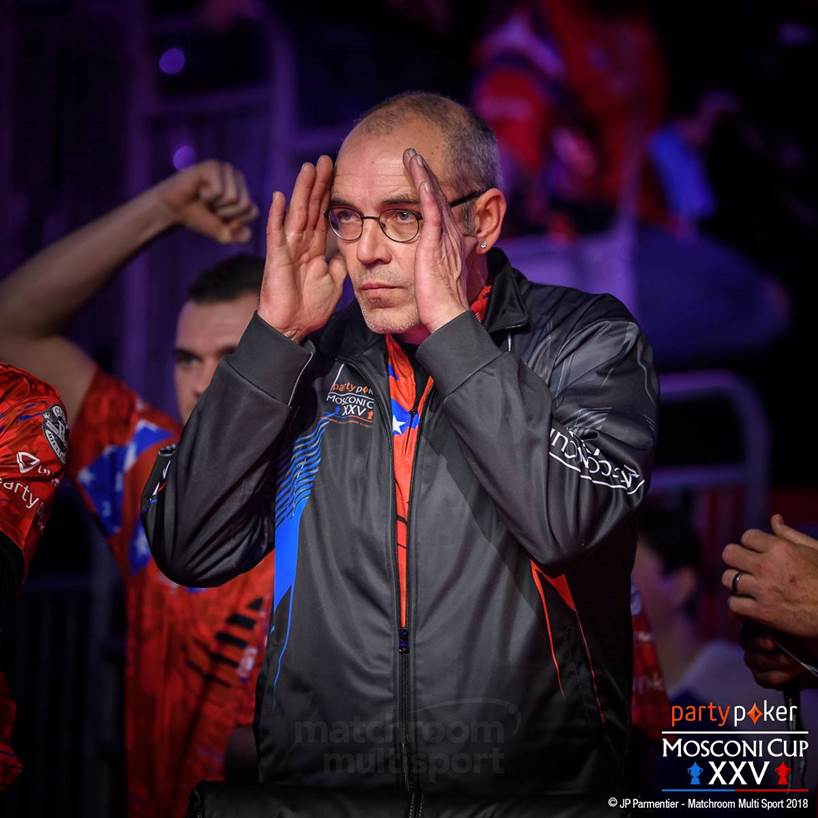
Team USA members went dark on social media, further adopting Ruysink’s bunker mentality. Wives, girlfriends and family who’d made the trip across the Atlantic were barred from the team’s London residence.
Individual members made personal changes as well. Woodward mentioned after winning MVP that he’d stopped drinking alcohol in preparation for this year’s Cup.
The result was a tougher, more resilient group of warriors who began to play for one another.
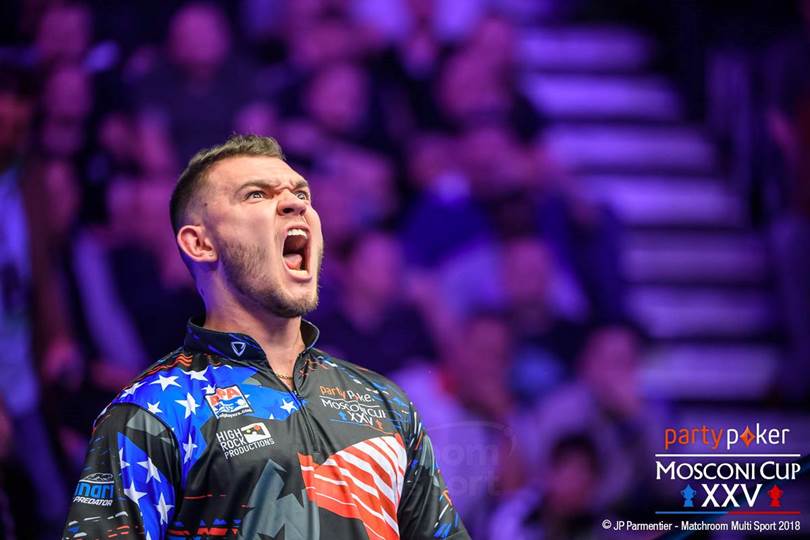
They demonstrated this in a Mosconi Cup-style sparring match with Team England just days before the start of the Cup itself. Team England consisted of several former Mosconi Cup champions. Team USA was forced to come storming back just to win the “warm up” match.
On the first night of the Cup, through the first two matches, things looked largely the same as they had the past several years for Team USA. They dropped the Team match, which they had an opportunity to win, and then lost a doubles pairing featuring Thorpe and Woodward. Quickly down 2-0, Styer would immediately be put to the test against Feijen, a four-time MVP of the event. As the European fans grew louder, Styer remained composed beyond his years and quickly dispatched Feijen 5-3.
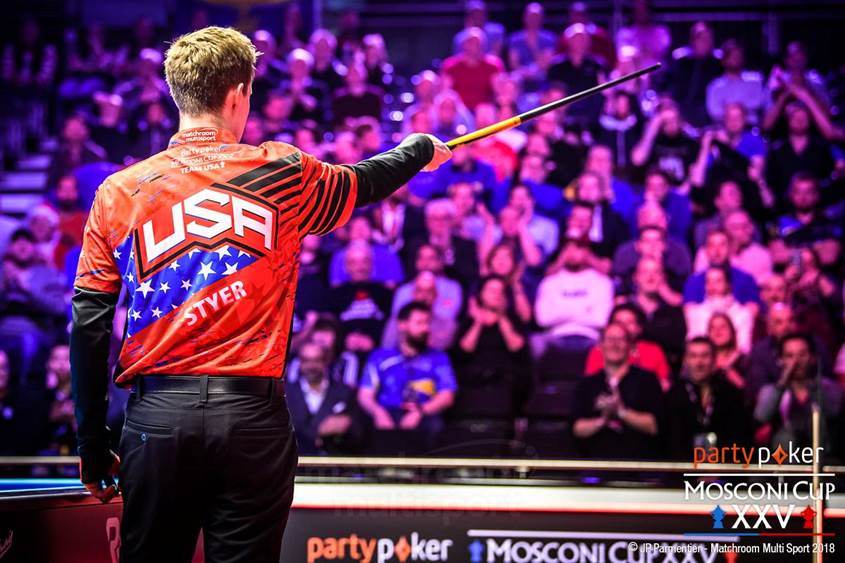
It was a critical turning point in the tournament. Had Styer gone down in flames, there’s no telling where this year’s Mosconi Cup might have gone.
With Team USA’s first point on the board, Van Boening and Deuel would then pick up a crucial doubles match to tie the overall score at two-a-piece. Van Boening closed out Day 1 with a dominant 5-0 shutout against Euro Fan Fave Jayson Shaw. It was the first time Team USA had won a single day’s competition in several years.
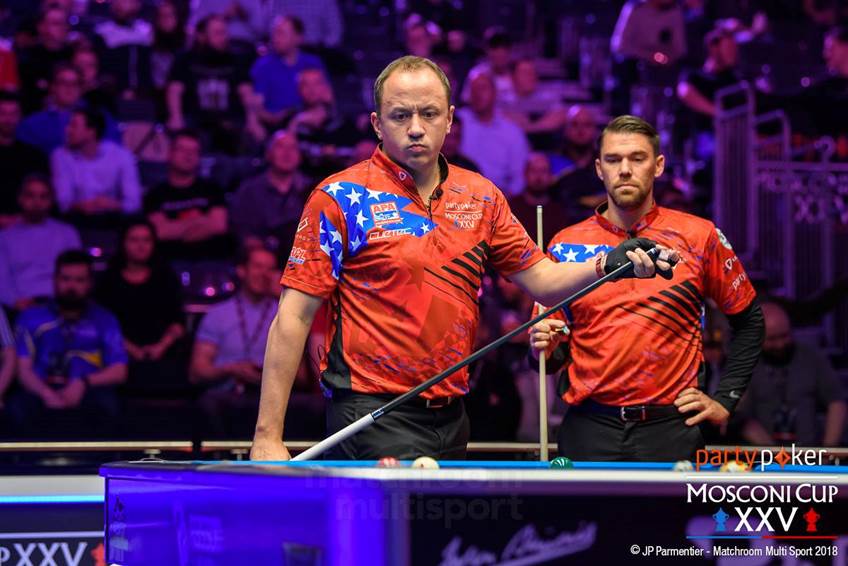
The same script would play out over the next two days. Team USA would be tested, Team USA would answer. Shot after shot, match after match. When the final day of competition arrived, they led Team Europe 9-6.
The first match on the final night of competition pitted tournament MVP candidates from each team – Woodward vs. Albin Ouschan. Ouschan had arguably been the best overall player at the Cup, and he won the break advantage on the lag.
Both players were flawless throughout the set, barely giving their opponent a chance at the table. It looked like the match would come down to who had the final break. But, Ouschan got a tough layout on the final break, and Woodward eventually took advantage, winning a crucial point for Team USA and solidifying himself as the eventual MVP.
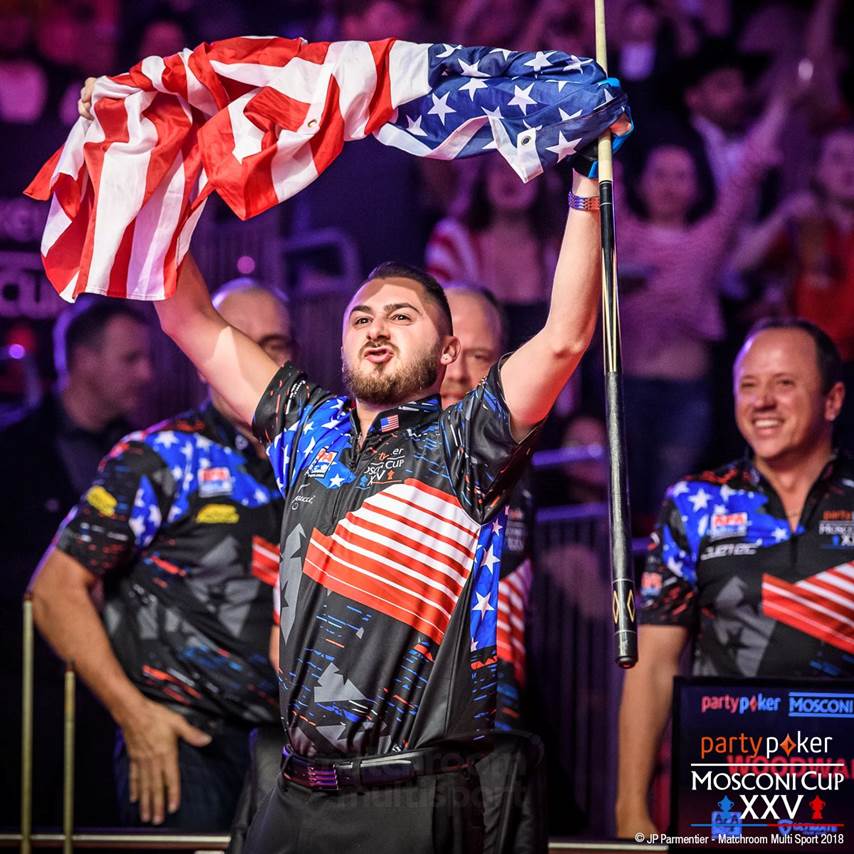
On the brink of elimination, Team Europe still had plenty of fight in them. They went on to win the next three matches and needed to win just one more to tie the score and force a one-match, captain’s-pick, winner-take-all match.
But, Ruysink and Team USA still had an ace up their sleeve. The ultimate closer, Van Boening. The same player who it looked like would miss the Cup earlier in the year, was now trying to secure Team USA’s first victory since 2009. Which Van Boening would we see? The player who has dominated so many tournaments over the last decade, or the player who had struggled in a leadership role for Team USA the past several years?
Ruysink and America got the Van Boening they desperately needed. He would eventually execute an exceptional 1-9 combination to secure the final point and the rest is history. But, to truly appreciate what Team USA accomplished in 2018, you have to understand just how history was made.
